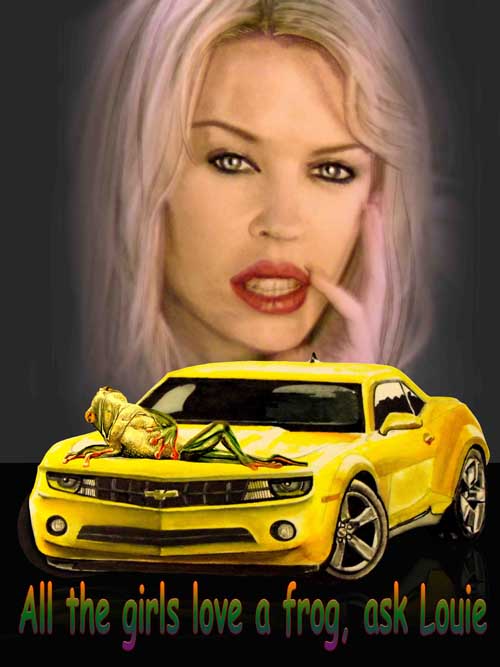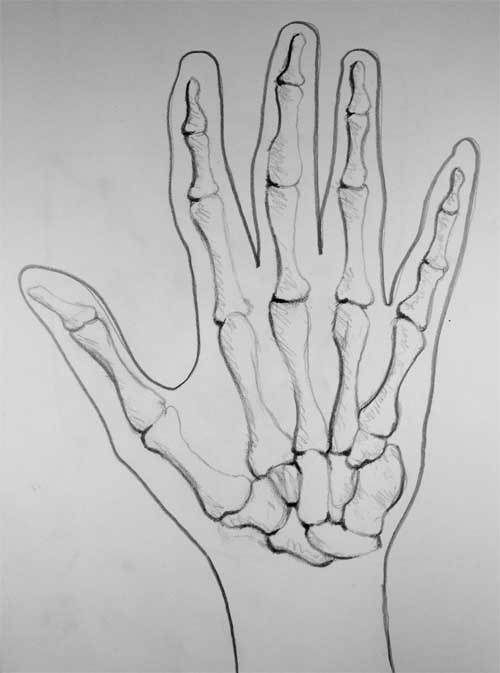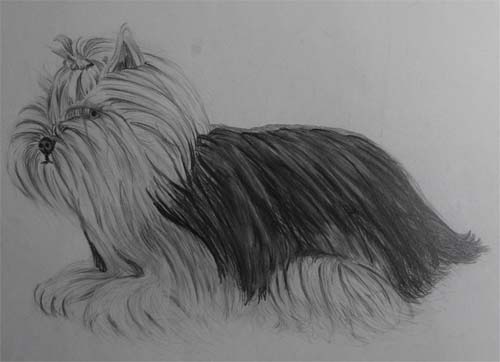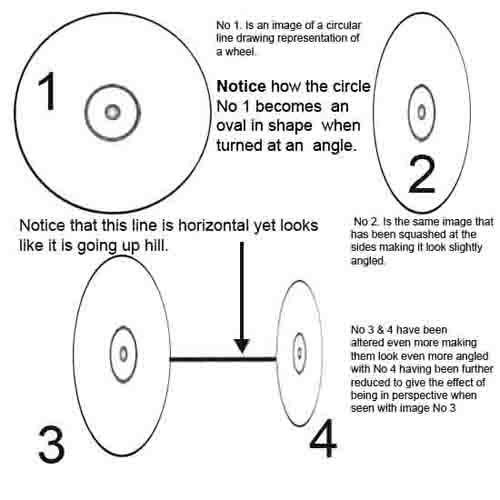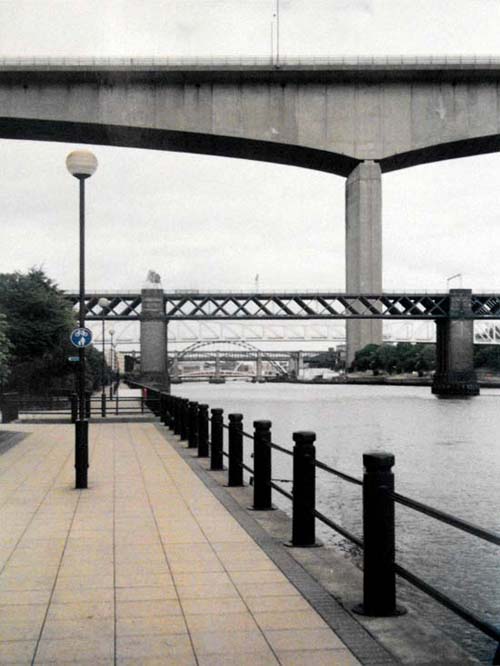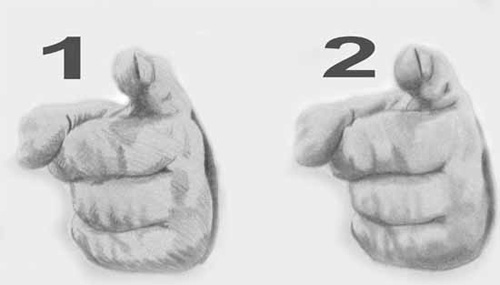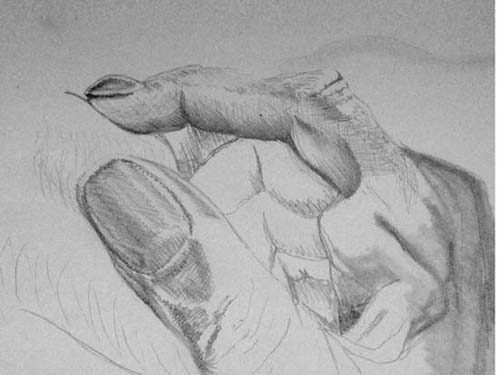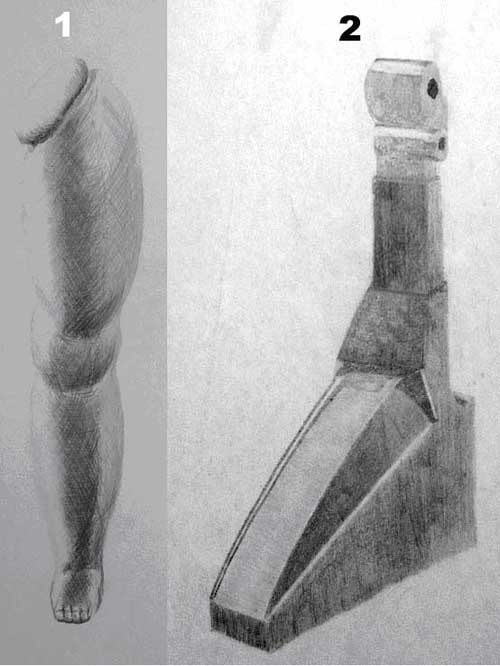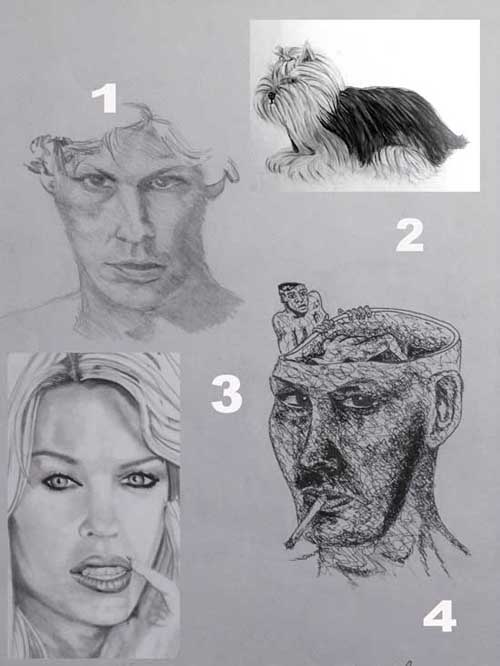Learn how to draw skulls by first thinking about the caricaturists of a human skull, it is composed of bone that forms the overall shape and because of this it is an off white color making it great for practicing your shading and providing a good subject matter to encourage you to make more use of the paper tone. Even if you use colored paper with highlights to emphasize the lightest tones, your skull drawings will still look good, giving you plenty of practice with your drawing techniques and skills. Common features to a skull are the brain cavity with a nice curved area, eye sockets, nose cavity, jaw and teeth. All of these can be exaggerated as features to easily create the skulls of monsters or sinister creatures but still recognizable as skulls because they have strong characteristics and features that are easily recognizable.
My advice for you would be to draw a human skull a few times so as to understand what a human skull looks like and how it is drawn but I don’t expect you to have one of your own so I have provided a few examples for you to draw if you want to use them. I would advise that you trace them first so you do not have to do the outline construction this will make it easier. If you want to learn more on the subject of tracing and its benefits then you could join my ezine and down load a free report on the right hand side of this page. When you have a few outlines drawn you can decide on which one you would like to continue by doing the shading on it.
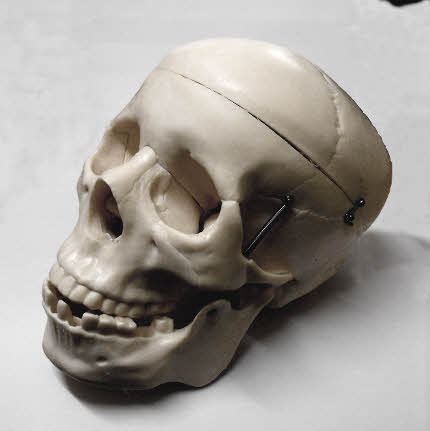
This will help you to see more detail in the subject matter, informing you as to how the shapes fit together and how the shadows help to create a more three dimensional shape to your skull drawings or any drawing.
It will also be good practice for helping you to better understand how to draw skulls of all kinds’ not just human skulls because it will put accurate information into your head to start with about skull drawings .
The video below will help you by showing you how I draw; it is always good to watch how others draw.
I suggest that after doing this you should try to draw some skulls free hand from memory.
The best way to draw skulls is to start off drawing real skulls then after drawing a few you will have the information written into your brain so as to be more able to draw them from memory. The good thing about learning how to draw skulls is s is that they are not like faces and do not have to look like a particular person in fact you can be quite creative with them because of this. The best way to start off is with the main outline which depending on which angle you are looking at is a circular shape with a rectangular bottom where the jaw would be when looking from the front.

When looking from the side it would be an oval shape lying horizontally with a rectangular shape jutting off the front where the jaw would be again.
From this basic shape you can then start putting in the detail, if you do these out line drawings with light pencil marks they can more easily be covered up as you put more detail into your drawing building it up as you go along. My best advice would be to use photographs to get your information and you can find many of these online but just in case you’re not able find any then you can use these that’s why they are here the help you learn how to draw skulls and you will find plenty of interesting angles that can be useful if wanting to add some other adornments like hats or head dress to you skull drawings when learning how to draw skulls.
Skulls are good for drawing as they are quite easy, once you have drawn a few, you can get a buzz out of drawing them because they look good without great effort, they can be used for horror art, fantasy art, tattoos or cartoons. They can be combined with many other elements of creature and character designs, they are good for adding drama as a visual dynamic, I enjoy drawing skulls and have drawn many.
Now you should try drawing some more skulls free hand by making simple line drawings of them trying out different versions quickly, try exaggerating features like cheek bones or teeth, try having some teeth missing. You could make one into a pirate skull by giving it an eye patch and a bandanna or an Indian with a head dress or a cowboy with a Stetson, the possibilities are endless. How to draw skulls will help you to make some great skull drawings but you should at the very least start by drawing your skull drawings from the photographs of real skulls.
View Gareth Pritchard’s profile on G+



